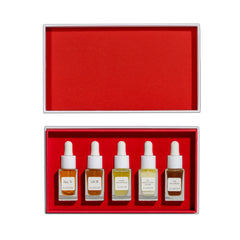I conducted research a few years ago on human skin samples to understand how various stressors impact skin health. This research was prompted by my own skin issues, which persisted despite using a range of products from different brands. These products, regardless of their origins—whether dermatological, natural, or luxury—shared similar ingredient profiles. This homogeneity stems from the fact that most skincare products are manufactured in the same factories, differing only in packaging and branding. Approximately 99% of skincare brands fall into this category.
What bothered me was the lack of substantive knowledge in the skincare industry. Most advice found online is a regurgitation of information from unverified sources, and even so-called scientific articles often repeat the same claims. Few, if any, individuals have conducted independent experiments to validate these claims.
This realization led me to investigate why acne persists despite the promises of products claiming to cure it. I dissected each ingredient, suspecting that many in the skincare industry lack a deep understanding of the biological impacts of their formulations. Skincare has become a vast echo chamber, often driven by trends and cult followings rather than evidence-based practices.
My approach was simple: identify what works and what doesn’t, with the goal of either incorporating effective ingredients into my formulations or avoiding harmful ones entirely. Through my experiments, I discovered several common ingredients that should be avoided.
Alcohol: This ingredient dries out the skin, causes cellular damage, and increases susceptibility to disease. Contrary to popular belief, alcohol does not effectively remove oil. Instead, it stimulates the skin to produce more oil, often inflammatory in nature, exacerbating acne. A study published in Dermatitis (2003) confirmed that alcohol-based products can disrupt the skin’s barrier function, leading to increased irritation and dryness.
Fragrance: Fragrances, including essential oils and flower extracts, can cause significant harm to the skin. Despite being marketed as safe for sensitive or acne-prone skin, these ingredients often lead to irritation and damage. Their inclusion is primarily for consumer appeal, underscoring the industry's prioritization of sales over skin health. Research in Contact Dermatitis (2014) highlighted the high prevalence of allergic reactions associated with fragrances in cosmetics, emphasizing their potential to harm sensitive skin.
My experiments extended to two widely used ingredients in acne treatments: glycolic acid and benzoyl peroxide. When exposing skin samples to these ingredients, I observed similar damage to that caused by alcohol and fragrance. This included deterioration of the plasma membrane and loss of vital cellular and extracellular matrix components.
To further explore these effects, I created two topical formulations: one with glycolic acid and benzoyl peroxide, and one without. The formulation without these ingredients consistently resulted in healthier, more resilient skin.
Glycolic Acid: This common exfoliant is a known sensitizer, making the skin more vulnerable to damage. Research indicates that glycolic acid’s role in increasing sun sensitivity is significant. Many warnings about sun exposure in conjunction with exfoliants stem specifically from glycolic acid usage. A 2016 study in Clinical, Cosmetic and Investigational Dermatology demonstrated that glycolic acid treatments increased transepidermal water loss and skin sensitivity, confirming its sensitizing effects.
Benzoyl Peroxide: This ingredient causes oxidative stress due to its peroxide composition, leading to cellular damage and inflammation. While it may temporarily reduce acne by killing bacteria, it compromises the skin’s integrity and long-term health. A study published in Journal of Dermatological Science (2018) revealed that benzoyl peroxide induces oxidative damage to keratinocytes and reduces the skin’s ability to recover from environmental stressors.
Through this research, I have concluded that these two ingredients, while widely recommended, are major contributors to skin deterioration. The skincare industry’s reliance on them reflects a broader pattern of prioritizing short-term results over sustainable skin health. Consumers often remain trapped in a cycle of damage and treatment, unable to understand why their skin fails to improve. The solution lies in rejecting these harmful ingredients and embracing a science-backed approach to skincare.
I decided to formulate the No. 9 differently, which uses poly hydroxy acids, which are larger and therefore exfoliate slower leading to a better skin result. It was formulated with those who have damaged skin to help with their skin barrier.
Unlike benzoyl peroxide which just kills bacteria by killing the skin, creating an endless cycle of acne, the No. 9 teaches the skin to become acidic leading to more resilience. The skin naturally becomes capable of killing bacteria on its own the way it is supposed to do naturally.





